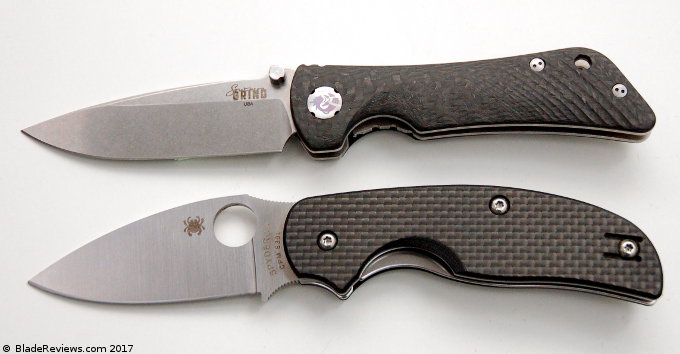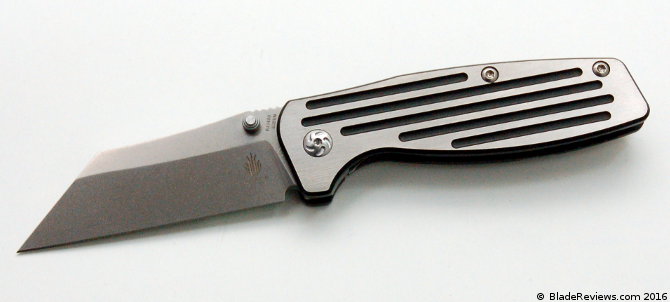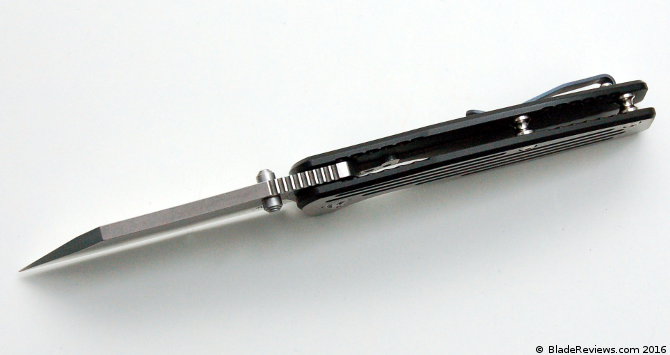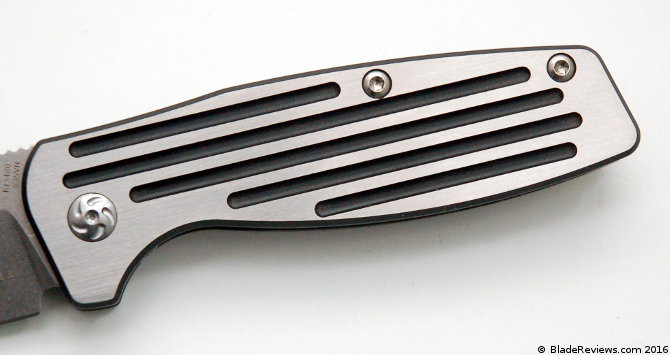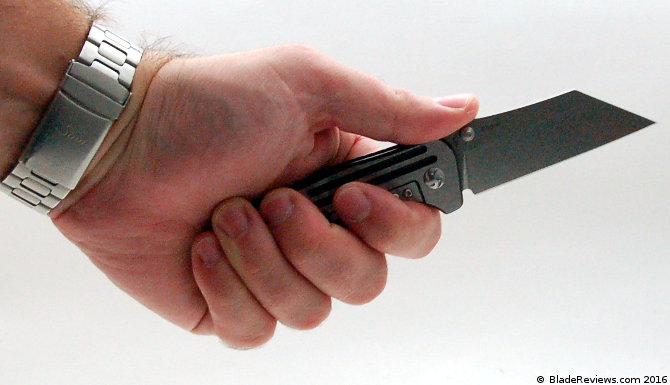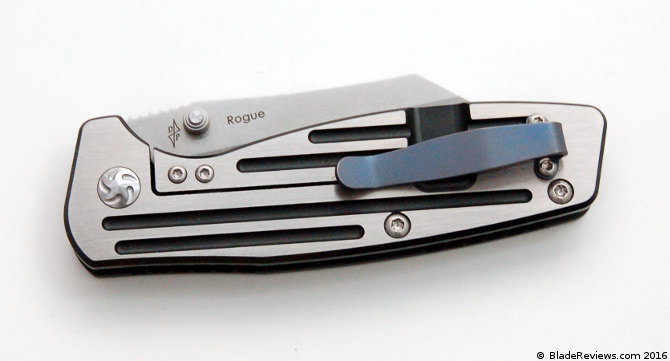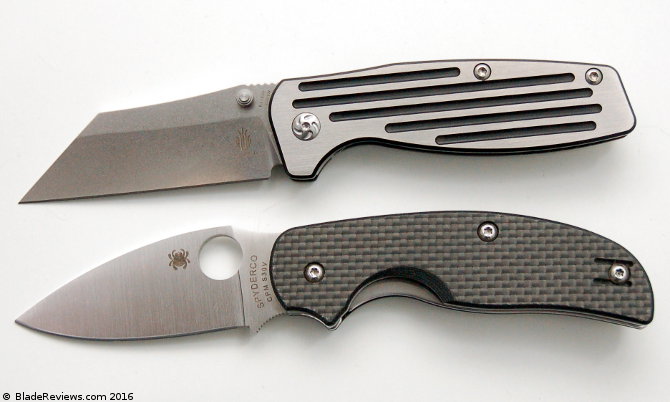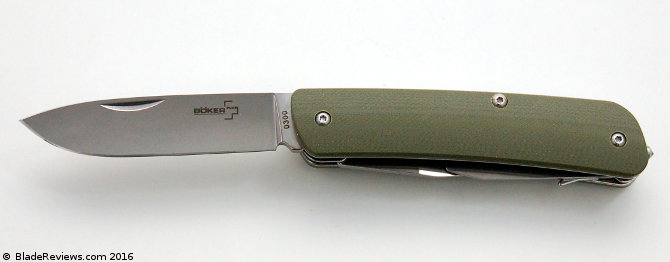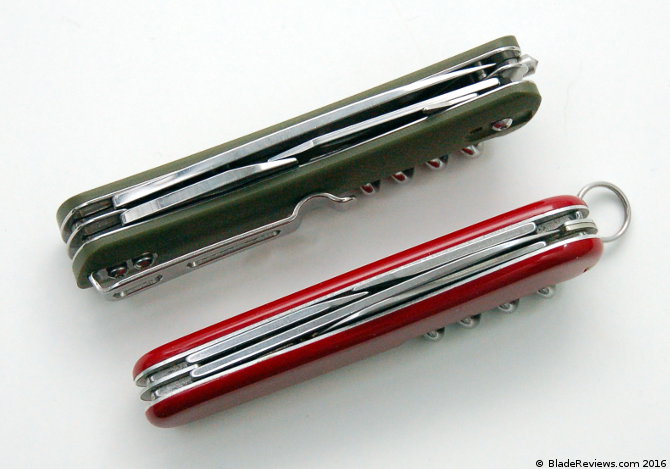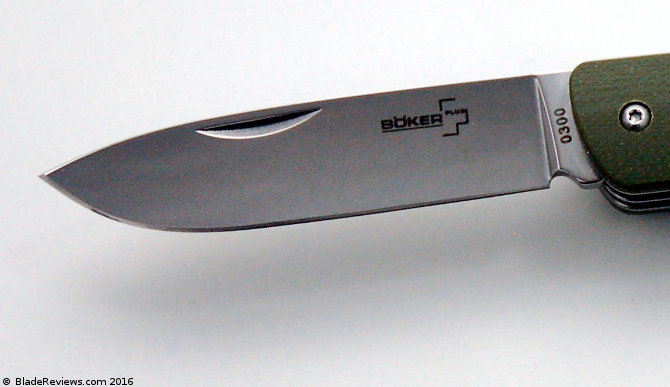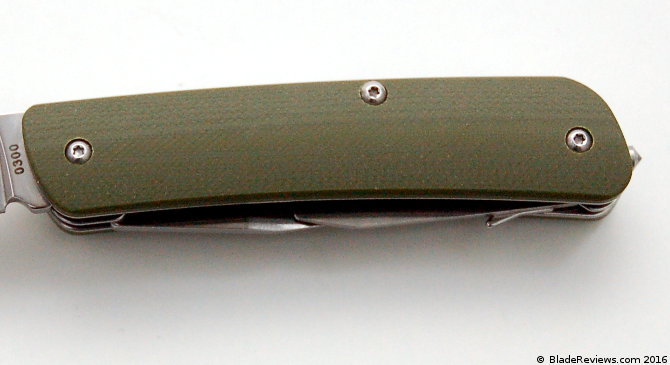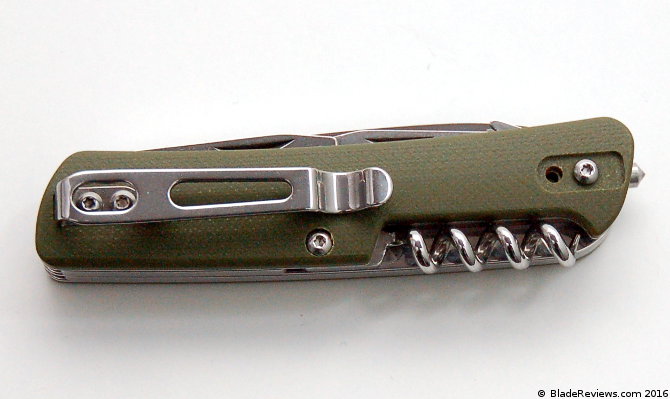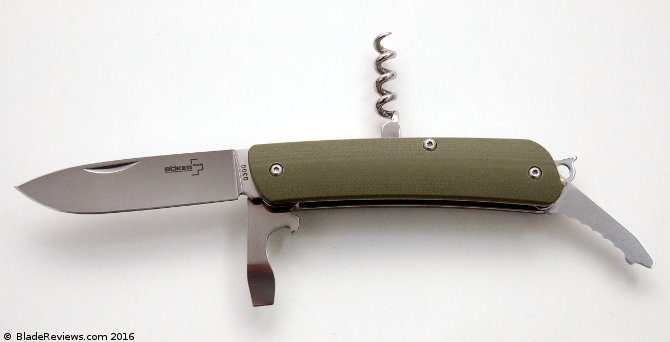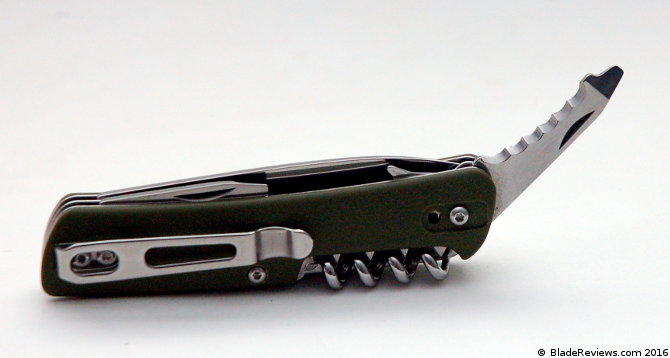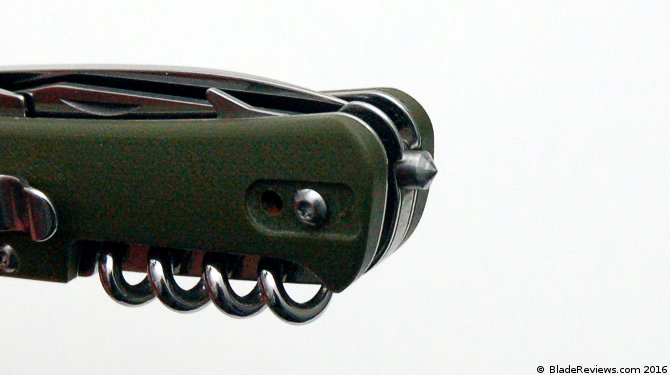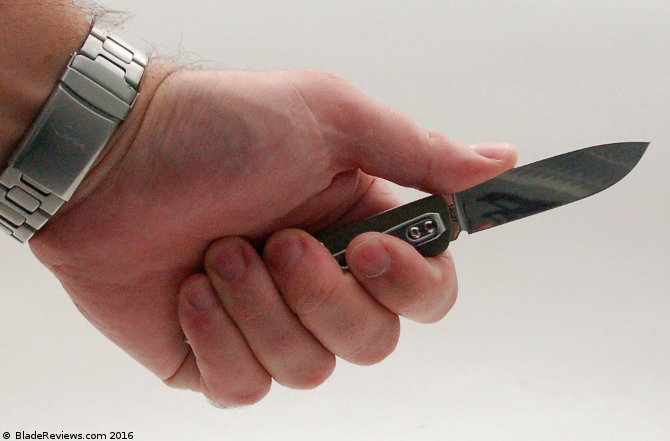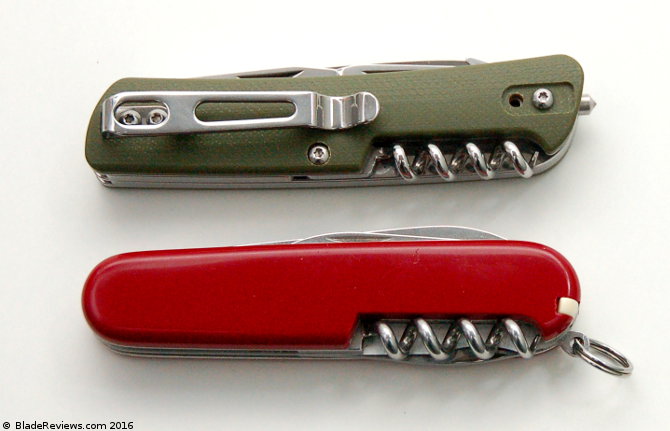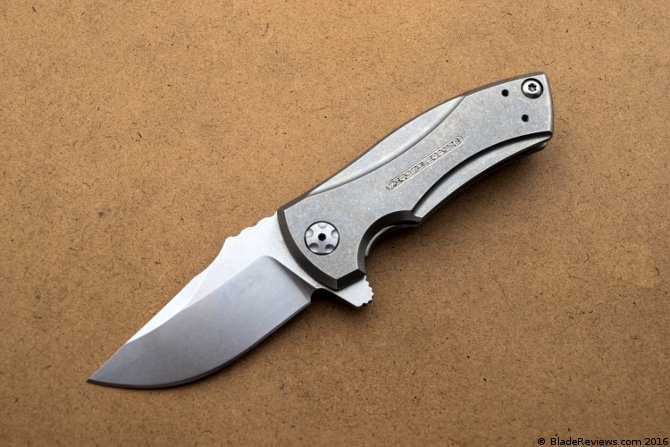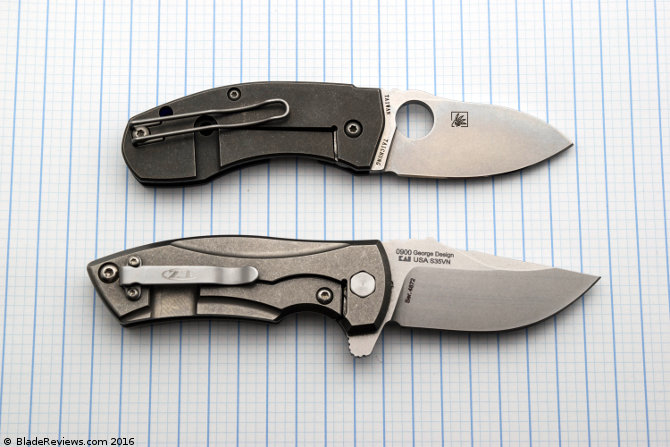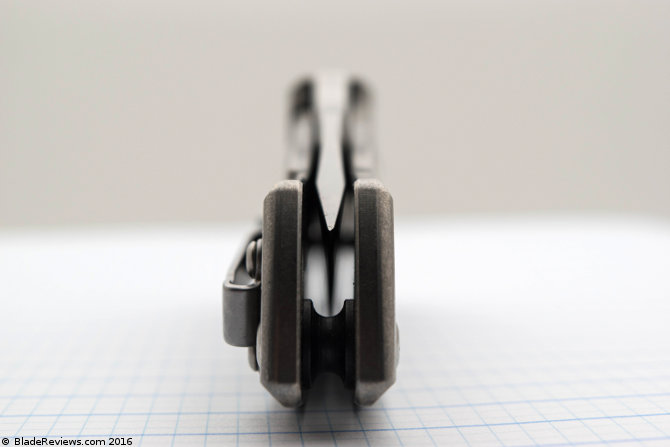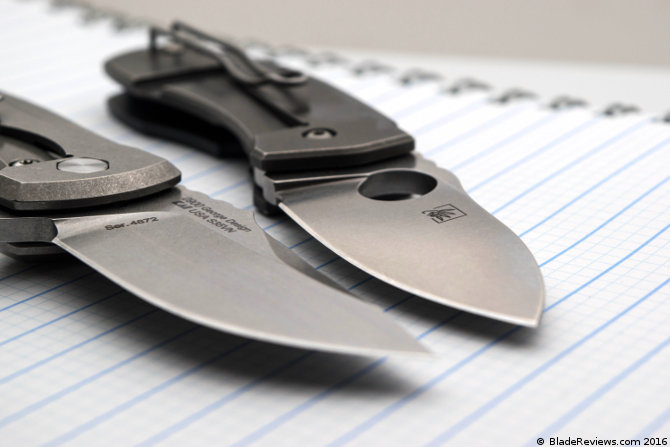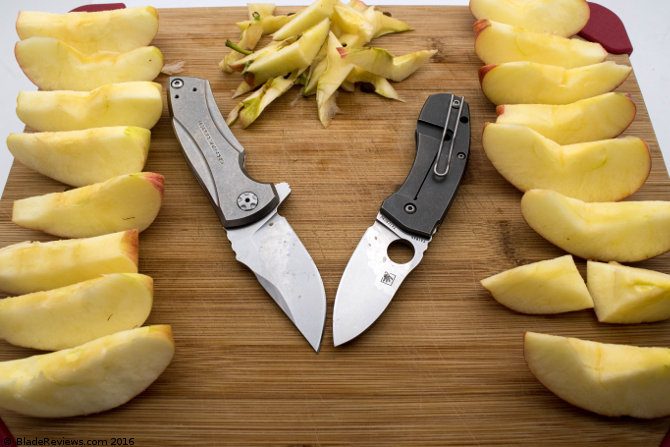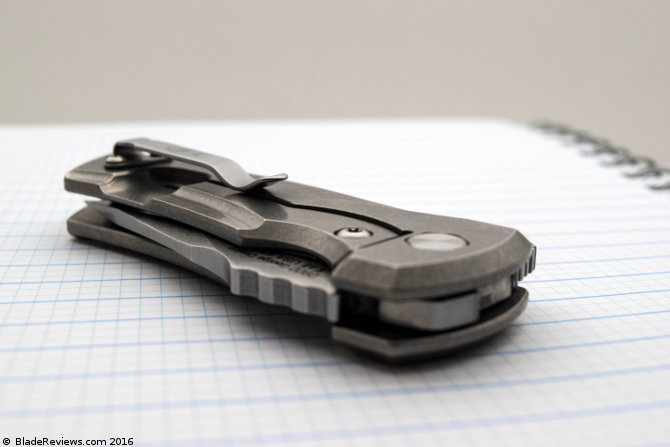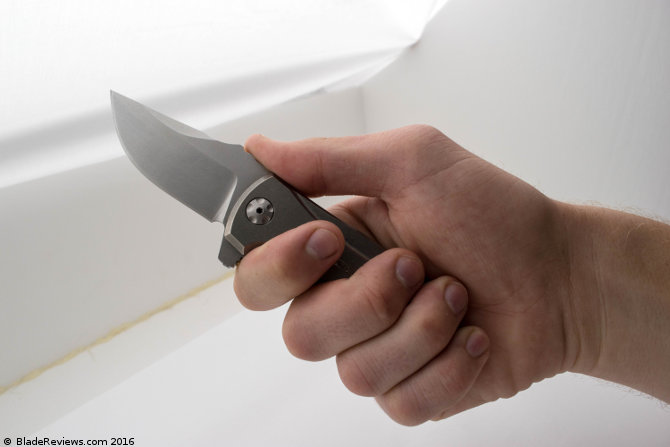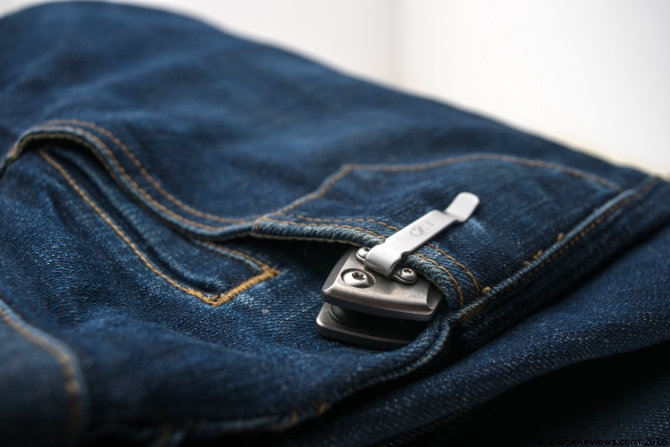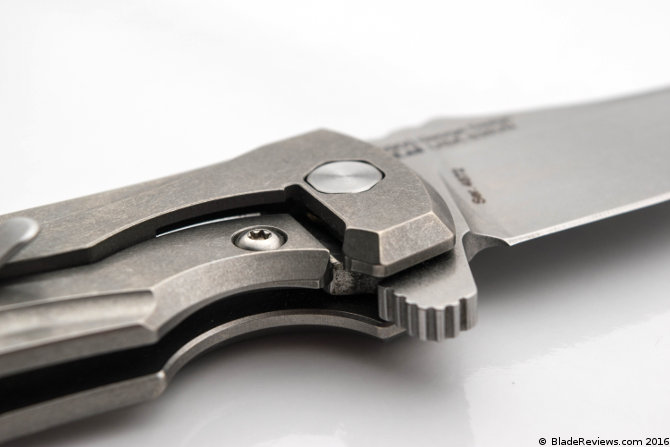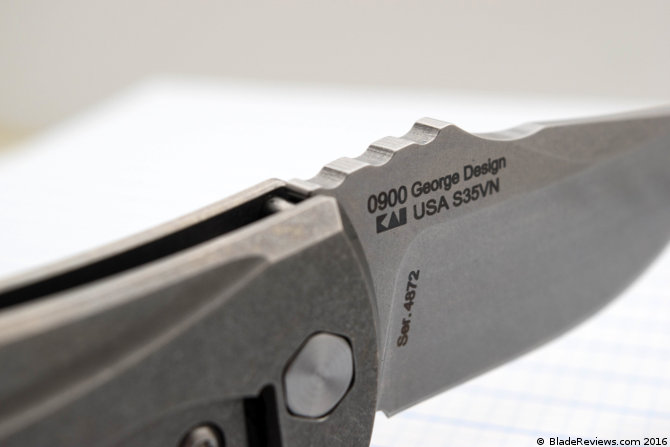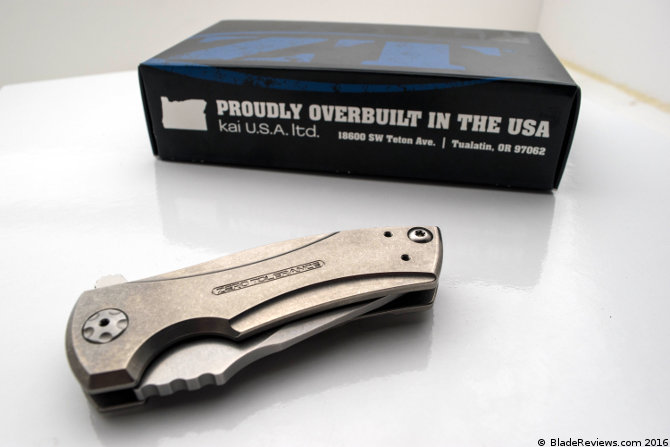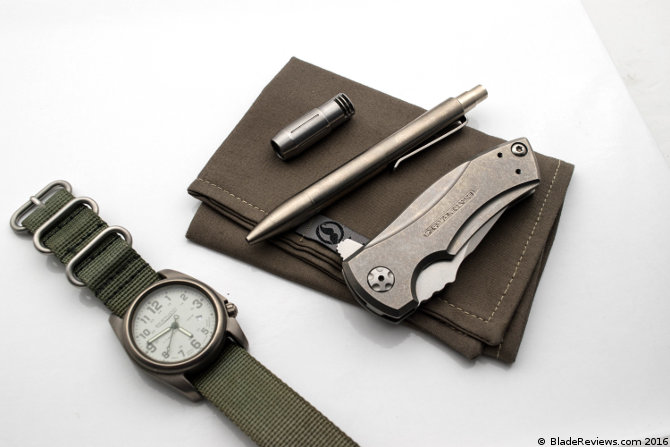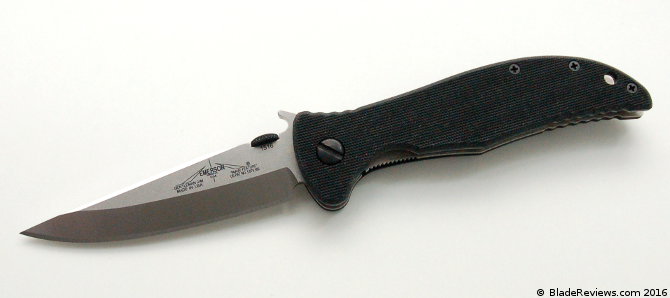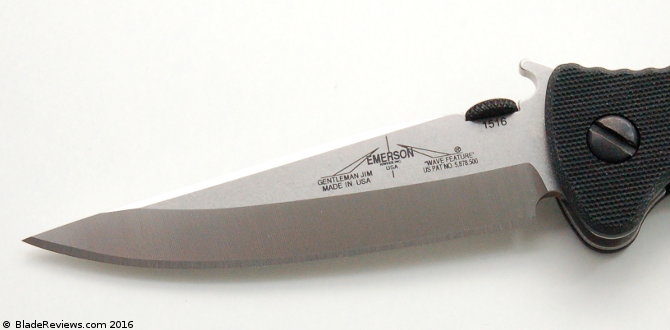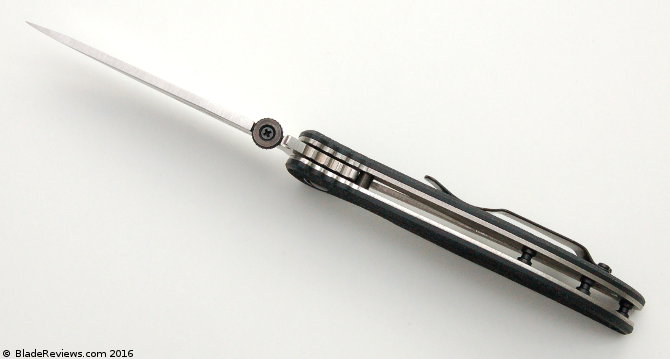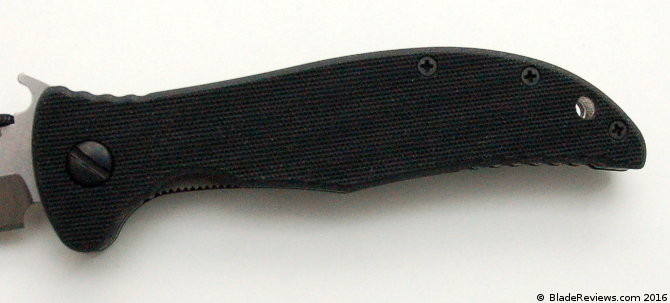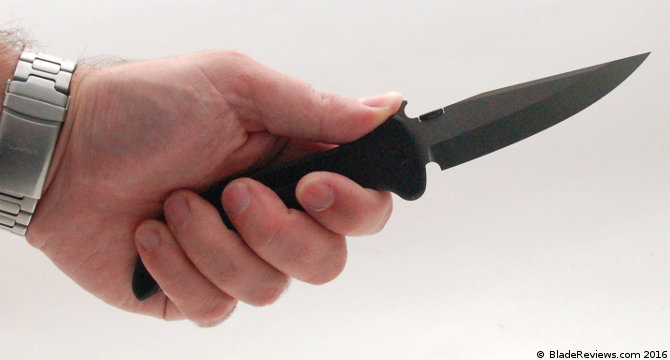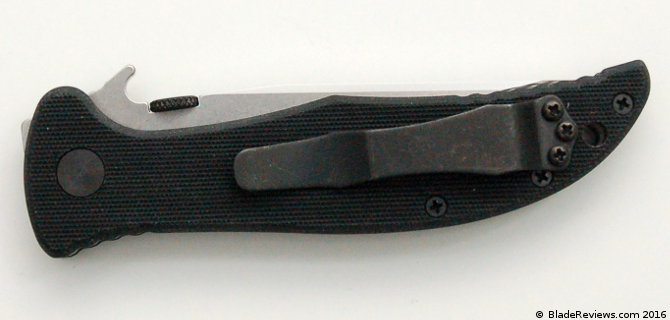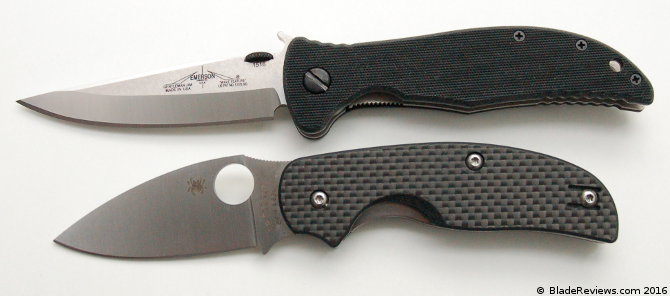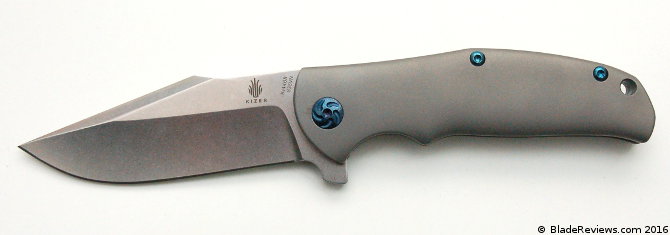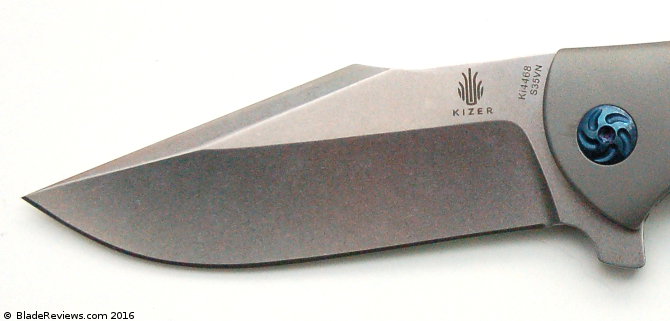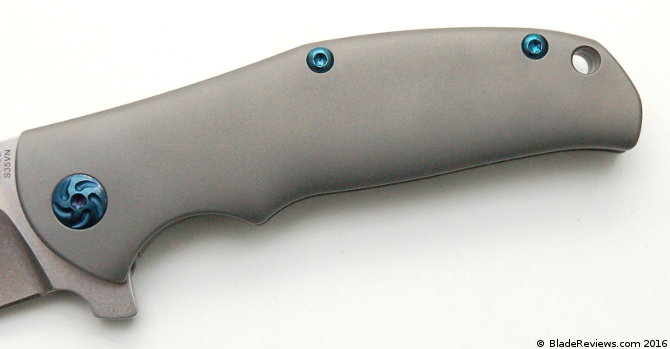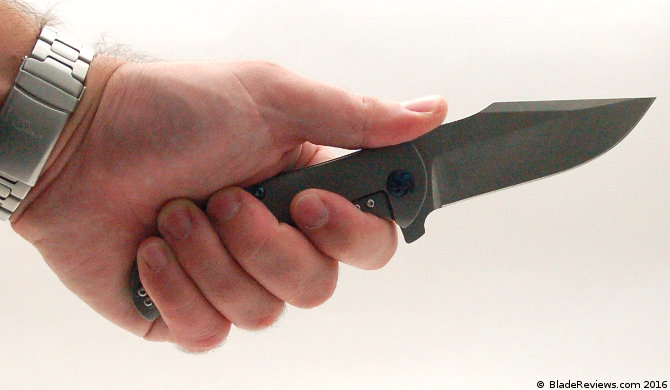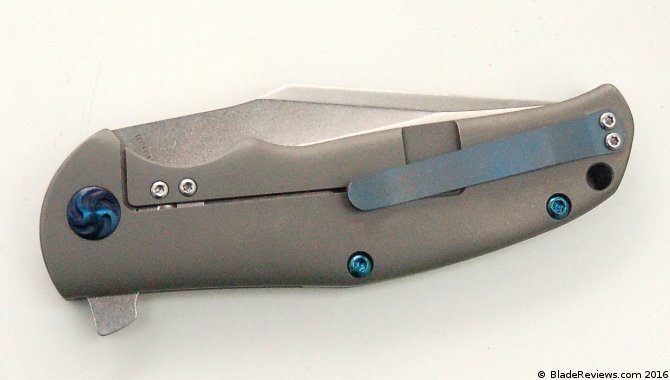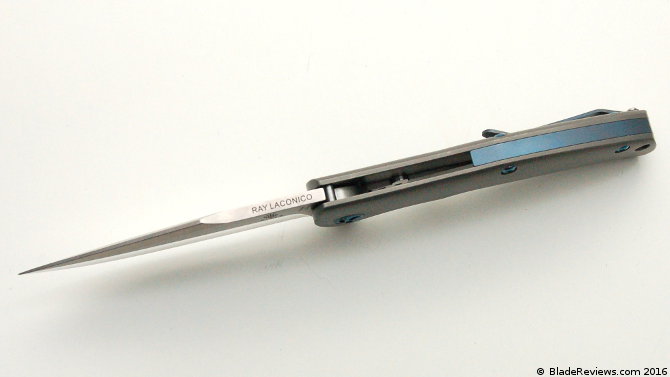Last Updated: July 30, 2019
Southern Grind is the pet project of country musician Zac Brown. Zac has a strong interest in pocket knives, and he apparently created Southern Grind in part to explore that interest. Southern Grind produces their knives in house, in the USA, and the knives feature a number of design decisions that stray from the beaten path. What I find especially interesting is that they make their custom own hardware.
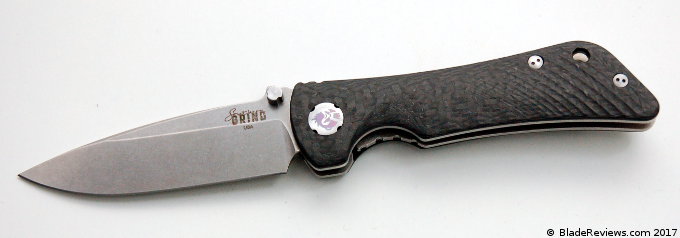
Buy the Southern Grind Spider Monkey at BladeHQ
Southern Grind’s first folder was the Bad Monkey, a quirky take on the large linerlock EDC knife. For whatever reason I never pulled the trigger on the Bad Monkey, but with the release of the smaller, lighter, and more refined Spider Monkey I finally moved forward.
General Dimensions and Blade Details
The Spider Monkey features an overall length of 7.50″, a 3.25” blade, and it weighs 3.2 ounces. The Spider Monkey compares favorably to Sage 1. The blade on the Spider Monkey is a 1/4″ longer than the blade of the Sage, but the handle is the same size. While the original Bad Monkey was a large utility folder with a 4″ blade, the Spider Monkey is much smaller and geared towards the EDC crowd.
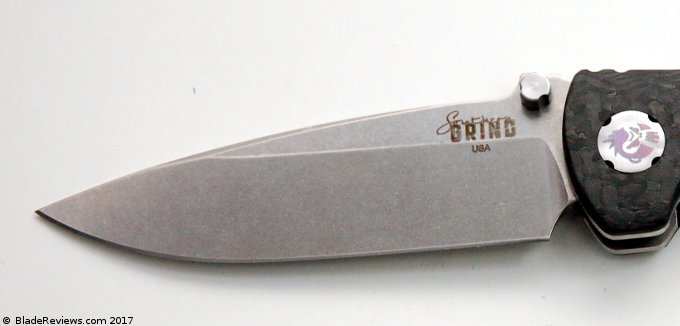
The blade is a gently sloping drop point shape with a prominent thumb ramp and small swedge. This knife also features a high flat grind and has been finished with a polish and stonewash. This is a classic no-frills blade shape, that gives you a little of everything. The tip is fine and ideal for piercing cuts, there is some belly, but also plenty of edge for draw cuts. The grind is thin and the knife slices well, and the edge has been applied neatly. This is a capable blade, ideally suited for daily tasks. I used my knife to open boxes, cut fruit, and help out with chores around the house.
Southern Grind also offers the Spider Monkey with a tanto blade shape, a partially serrated version, and with an optional black coating.
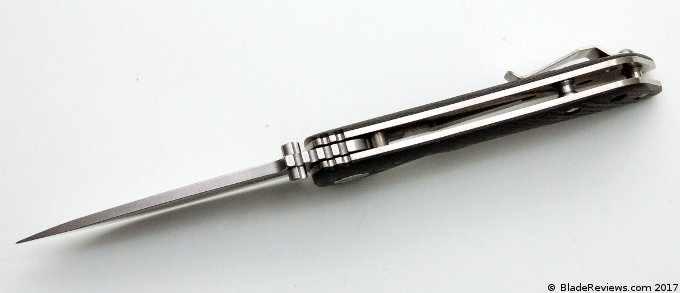
Southern Grind used S35VN steel for the blade, a good choice given the price point and intended use. I’ve written a lot about S35VN. We seem to see it crop up in more and more premium knives these days. I like how this steel holds a good edge, but is still is easy to sharpen. I prefer it over harder steels that are more difficult to maintain. I like how I can run this knife over a ceramic rod and bring it back to hair shaving sharp without a ton of work.
Handle, Ergonomics, and Pocket Clip
The Spider Monkey features carbon fiber handle scales over titanium liners. The carbon fiber is contoured, and it features a ribbed texture that starts at the pommel and fades into smooth carbon fiber about half way into the handle. The handle is held together with custom hardware and pillars. The fit of all the parts is excellent. The profile of the handle is unique with its swayed back and large pommel, but it all works. Even the laser etched logo on the custom pivot is perfectly aligned. It is little touches like this that show the thought and care that went into engineering this knife.
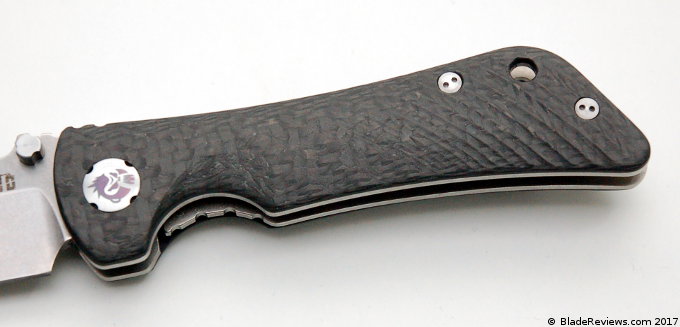
I am also not a fan of the proprietary body screws. While I can appreciate the fact that these are custom machined parts, you need a special tool to take the knife apart, and it doesn’t ship with the knife. I’d prefer torx hardware for ease of disassembly, or at least charge me a little extra and ship the knife with the necessary take down tool.
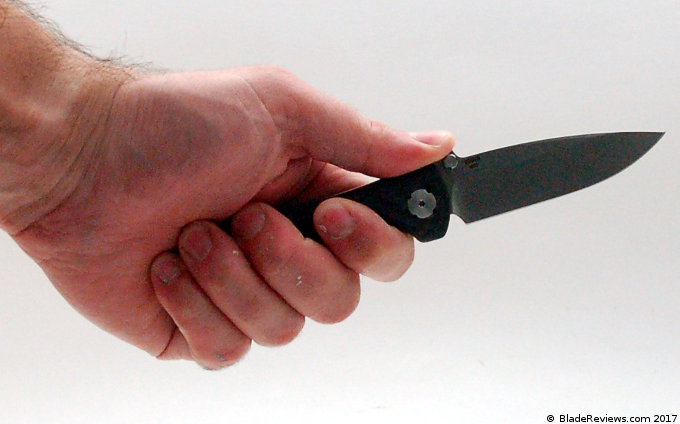
The handle of the Spider Monkey may look a little boxy, but it is comfortable. The finger choil does a good job indexing your finger, and the rounded back corner of the handle is fits neatly into your hand. While the carbon fiber scales don’t offer tons of grip, there is some texture here. Plus, there is some aggressive jimping on the thumb ramp. I would dial that back or do away with it, but I know some people will appreciate the extra traction here.
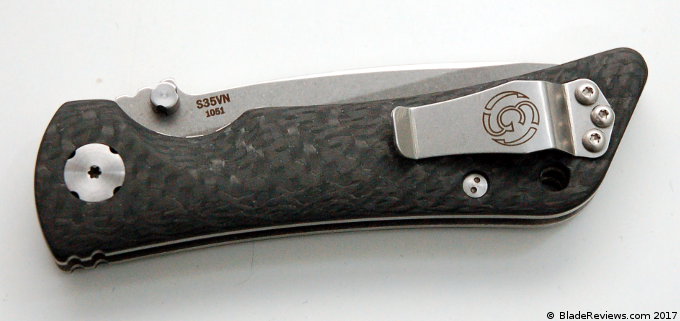
The pocket clip is perhaps the most novel feature of the knife. This is a shortened version of the clip you will find on a Benchmade or Emerson. This is something Zack Brown himself developed after being frustrated with longer pocket clips. This won’t be to everyone’s taste, but I think it’s cool. The clip works well. Retention is strong and there is no danger of the Spider Monkey slipping out of your pocket. If you don’t like it you could always swap it out with a Benchmade or Emerson clip.
Deployment and Lockup
The Spider Monkey uses dual thumb studs to get the blade open. Again, we have proprietary hardware here, which is cool to see in this application. I found the action on my knife to be a little stiff, and because of the custom body screws I was not able to take the knife apart for a cleaning. I could flick the blade open with some wrist action, but that was it. The action is smooth thanks in part to phosphor bronze washers, but the blade doesn’t want to fly open like on some of my other knives.
The titanium liner lock is substantial and executed wonderfully. Lockup is early and secure. There is absolutely no blade play in any direction, and the lock is easy enough to disengage when you are ready to close the blade. This liner lock works so well, I thought it was stainless steel. I bemoaned titanium liner locks in my Emerson Gentleman Jim review because the titanium liner lock on my knife (and in most Emersons I have handled) stick like crazy. Clearly, not all titanium liner locks are created equal, and this is a great liner lock. It is easily on par with my Sage 1.
Blade centering is perfect on my knife.
Southern Grind Spider Monkey – Final Thoughts
The Spider Monkey is a cool little knife. I have been intrigued by this company, ever since they arrived on the scene a few years ago, but I ended up liking the Spider Monkey more than I thought I would. It’s a great size and there are a number of details that set this apart from your typical slab construction liner lock folders. I like the stubby pocket clip, the custom pivot and thumb studs, and the contoured carbon fiber handles. In a way, this is how I would expect an Emerson knife to be made: beautiful construction, modern materials, and a stainless steel thick titanium liner lock that doesn’t stick with phosphor bronze washers. But like an Emerson, this Southern Grind knife has its quirks as well.
The biggest quirk, and my biggest beef with the Spider Monkey, is that I don’t like the proprietary body screws. I have found that being able to periodically disassemble and clean my EDC knives is essential to a piece being a true “user” knife for me. I don’t care if I never disassemble my 888, but I need to be able to take apart a simple liner lock EDC knife like this.
Still, the pros outweigh the cons with the Spider Monkey. Southern Grind is a young knife company, and they are coming out with some cool stuff. Plus, they clearly know how to make things. The tolerances are great, and the end result is a premium product. I enjoy this Spider Monkey and look forward to keeping it for long term testing and evaluation. In the meantime, buy it if you like the design. I can vouch that it is a quality tool.
- PREMIUM QUALITY: Made from S35VN steel for a strong and dependable knife. Your blade stays safe and secure with our 6AL4V Titanium lock and liner.
- BUILT TO LAST: Our tough, durable USA-made tactical knives give you unmatched reliability - resistant to edge chipping and corrosion.
- STRONG GRIP: Textured carbon fiber matte finish for a strong and solid, all-conditions grip. The short pocket clip ensures a secure pocket carry with minimal interference.
- VERSATILITY: An all-around EDC knife perfect for every day use as well as tactical or military purposes. Foldable and compact to store in your backpack, survival gear kit, and more.
- 100% GUARANTEE, MADE IN USA: Your Southern Grind knife is guaranteed under our Limited Warranty for the lifetime of the original purchaser. A portion of each sale goes to benefit Camp Southern Ground.
I recommend purchasing the Southern Grind Spider Monkey at Amazon, BladeHQ, and KnifeArt. Please consider that purchasing anything through any of the links on this website helps support BladeReviews.com, and keeps the site going. As always, any and all support is greatly appreciated. Thank you very much.
